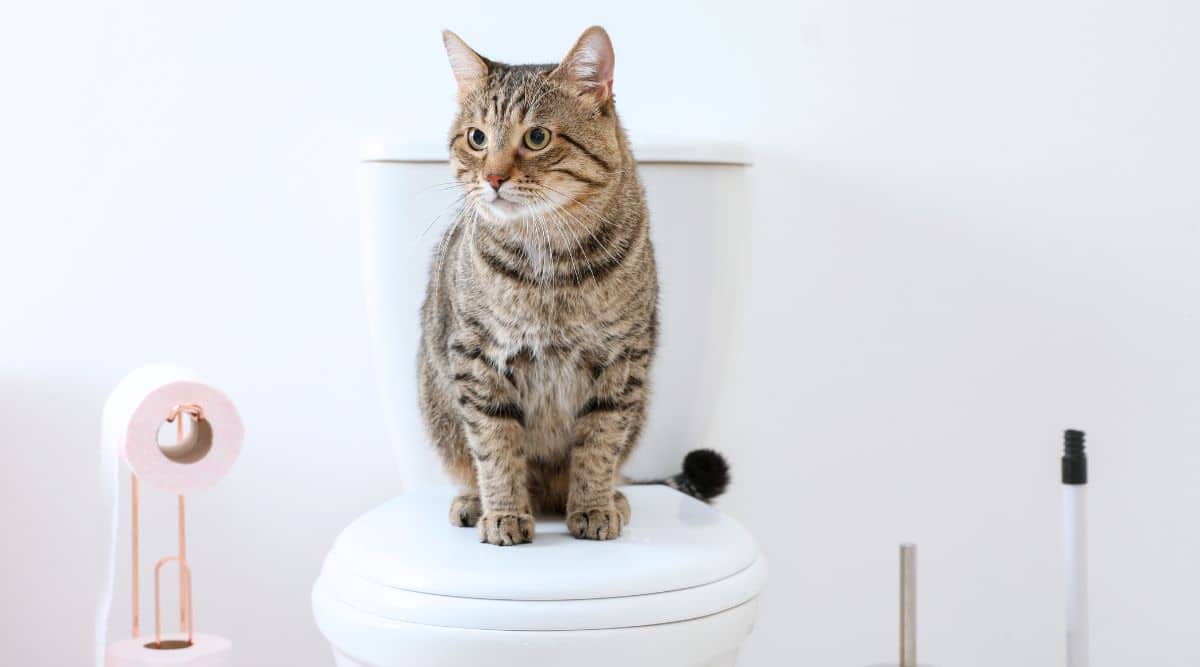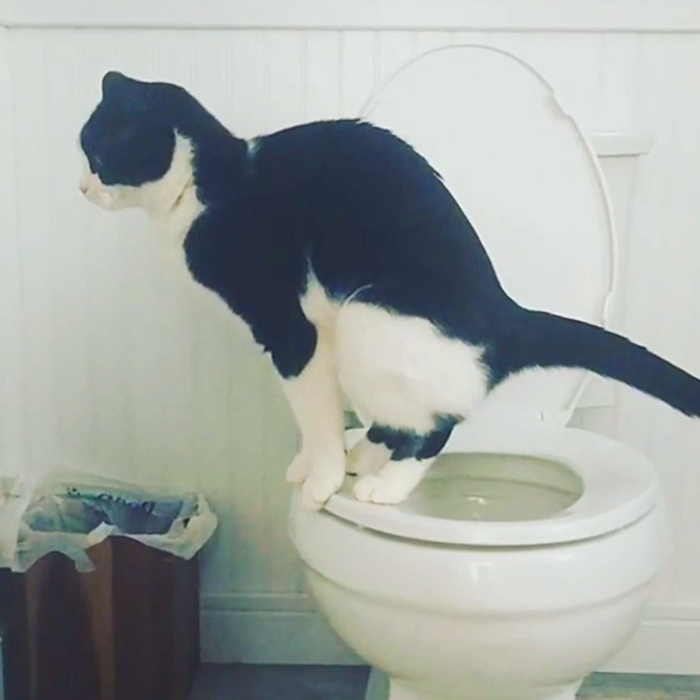Key Reasons Why Animal Waste Ought to Never Be Flushed Down the Toilet
Key Reasons Why Animal Waste Ought to Never Be Flushed Down the Toilet
Blog Article
We have noticed this post on Can You Flush Dog and Cat Poo Down the Toilet? directly below on the net and accepted it made perfect sense to share it with you on my blog.

When it pertains to dealing with waste, especially animal waste, lots of people usually resort to the hassle-free alternative of flushing it down the commode. Nonetheless, this seemingly simple remedy can have serious repercussions for the atmosphere and public health. In this write-up, we'll discover why flushing animal waste down the toilet is a poor idea and offer alternate techniques for appropriate disposal.
Introduction
Proper waste disposal is important for preserving ecological sustainability and public health. While it might seem harmless to purge animal waste down the bathroom, it can cause various issues, both for the setting and human wellness.
Dangers of flushing animal waste
Ecological impact
Purging pet waste introduces unsafe germs and pathogens right into waterways, which can adversely influence aquatic ecological communities. These microorganisms can contaminate water sources and injury marine life, interfering with fragile ecosystems.
Public health issues
Animal waste contains damaging germs such as E. coli and Salmonella, which can present severe wellness threats to human beings. Purging pet waste down the bathroom can pollute water supplies, causing the spread of illness and infections.
Alternatives to flushing
Rather than flushing pet waste down the commode, there are a number of alternate disposal methods that are extra environmentally friendly and hygienic.
Composting
Composting animal waste is an eco-friendly means to deal with it. By composting, raw material is broken down right into nutrient-rich dirt, which can be used to fertilize yards and plants.
Land fill disposal
Getting rid of pet waste in a land fill is another option. While not as eco-friendly as composting, it is a safer option to flushing, as it stops the contamination of water sources.
Pet garbage disposal systems
There are specific family pet waste disposal systems offered that safely here and hygienically dispose of pet waste. These systems often utilize enzymes to break down waste and remove odors.
Steps to appropriate pet garbage disposal
To make certain proper disposal of animal waste, comply with these actions:
Scooping and bagging waste
On a regular basis scoop and bag pet waste making use of biodegradable bags. This avoids waste from polluting the environment.
Using designated waste containers
Dispose of bagged pet waste in marked waste containers, such as garden compost bins or landfill bins. Avoid flushing it down the commode in all prices.
Cleaning up litter boxes and animal areas regularly
Regularly tidy can and animal locations to avoid the buildup of waste and bacteria. Usage pet-safe cleaning items to preserve health.
Advantages of proper disposal techniques
Adopting appropriate disposal methods for pet waste offers numerous benefits:
Lowered environmental pollution
Proper disposal techniques reduce the danger of environmental pollution, shielding waterways and ecological communities from contamination
Reduced danger of water contamination.
By staying clear of flushing animal waste down the bathroom, the danger of water contamination is significantly decreased, securing public health.
Improved hygiene and health
Proper disposal techniques promote better cleanliness and health, developing a safer environment for both humans and animals.
Verdict
Finally, purging animal waste down the toilet is hazardous to the atmosphere and public health. By adopting different disposal approaches and complying with proper waste monitoring methods, we can minimize the adverse effect of pet waste and contribute to a cleaner, much healthier planet.
Why You Should Never Flush Cat Poop Down the Toilet
A rose by any other name might smell as sweet, but not all poop is created equal. Toilets, and our sewage systems, are designed for human excrement, not animal waste. It might seem like it couldn’t hurt to toss cat feces into the loo, but it’s not a good idea to flush cat poop in the toilet.
First and foremost, assuming your cat uses a litter box, any waste is going to have litter on it. And even the smallest amount of litter can wreak havoc on plumbing.
Over time, small amounts build up, filling up your septic system. Most litter sold today is clumping; it is made from a type of clay that hardens when it gets wet. Ever tried to scrape old clumps from the bottom of a litter box? You know just how cement-hard it can get!
Now imagine just a small clump of that stuck in your pipes. A simple de-clogger like Drano isn’t going to cut it. And that means it’s going to cost you big time to fix it.
For an amusing, graphic tale of what happens when you flush too much litter down the toilet all at once, take a few minutes to read Gene Weingarten’s 2017 Washington Post column “So that’s what happens when you flush cat litter down the toilet.”
Parasitic Contamination
Believe it or not, your healthy kitty may be harboring a nasty parasite. Only cats excrete Toxoplasma in their feces. Yet it rarely causes serious health issues in the cats that are infected. Most people will be fine too if infected. Only pregnant women and people with compromised immune systems are at risk. (If you’ve ever heard how women who are expecting are excused from litter cleaning duty, Toxoplasma is why.)
But other animals may have a problem if infected with the parasite. And human water treatment systems aren’t designed to handle it. As a result, the systems don’t remove the parasite before discharging wastewater into local waterways. Fish, shellfish, and other marine life — otters in particular — are susceptible to toxoplasma. If exposed, most will end up with brain damage and many will die.
Depending on the species of fish, they may end up on someone’s fish hook and, ultimately on someone’s dinner plate. If that someone has a chronic illness, they’re at risk.
Skip the Toilet Training
We know there are folks out there who like to toilet train their cats. And we give them props, it takes a lot of work. But thanks to the toxoplasma, it’s not a good idea.
Leave the toilet to the humans, and accept your future litter cleaning duty.

Regularly tidy can and animal locations to avoid the buildup of waste and bacteria. Usage pet-safe cleaning items to preserve health.
Advantages of proper disposal techniques
Adopting appropriate disposal methods for pet waste offers numerous benefits:
Lowered environmental pollution
Proper disposal techniques reduce the danger of environmental pollution, shielding waterways and ecological communities from contamination
Reduced danger of water contamination.
By staying clear of flushing animal waste down the bathroom, the danger of water contamination is significantly decreased, securing public health.
Improved hygiene and health
Proper disposal techniques promote better cleanliness and health, developing a safer environment for both humans and animals.
Verdict
Finally, purging animal waste down the toilet is hazardous to the atmosphere and public health. By adopting different disposal approaches and complying with proper waste monitoring methods, we can minimize the adverse effect of pet waste and contribute to a cleaner, much healthier planet.
Why You Should Never Flush Cat Poop Down the Toilet
A rose by any other name might smell as sweet, but not all poop is created equal. Toilets, and our sewage systems, are designed for human excrement, not animal waste. It might seem like it couldn’t hurt to toss cat feces into the loo, but it’s not a good idea to flush cat poop in the toilet.
First and foremost, assuming your cat uses a litter box, any waste is going to have litter on it. And even the smallest amount of litter can wreak havoc on plumbing.
Over time, small amounts build up, filling up your septic system. Most litter sold today is clumping; it is made from a type of clay that hardens when it gets wet. Ever tried to scrape old clumps from the bottom of a litter box? You know just how cement-hard it can get!
Now imagine just a small clump of that stuck in your pipes. A simple de-clogger like Drano isn’t going to cut it. And that means it’s going to cost you big time to fix it.
For an amusing, graphic tale of what happens when you flush too much litter down the toilet all at once, take a few minutes to read Gene Weingarten’s 2017 Washington Post column “So that’s what happens when you flush cat litter down the toilet.”
Parasitic Contamination
Believe it or not, your healthy kitty may be harboring a nasty parasite. Only cats excrete Toxoplasma in their feces. Yet it rarely causes serious health issues in the cats that are infected. Most people will be fine too if infected. Only pregnant women and people with compromised immune systems are at risk. (If you’ve ever heard how women who are expecting are excused from litter cleaning duty, Toxoplasma is why.)
But other animals may have a problem if infected with the parasite. And human water treatment systems aren’t designed to handle it. As a result, the systems don’t remove the parasite before discharging wastewater into local waterways. Fish, shellfish, and other marine life — otters in particular — are susceptible to toxoplasma. If exposed, most will end up with brain damage and many will die.
Depending on the species of fish, they may end up on someone’s fish hook and, ultimately on someone’s dinner plate. If that someone has a chronic illness, they’re at risk.
Skip the Toilet Training
We know there are folks out there who like to toilet train their cats. And we give them props, it takes a lot of work. But thanks to the toxoplasma, it’s not a good idea.
Leave the toilet to the humans, and accept your future litter cleaning duty.

As an avid person who reads on Why you should never flush dog poop down the toilet, I thought sharing that editorial was sensible. Those who enjoyed our blog entry kindly make sure you remember to pass it around. Thank you for taking the time to read it.
Visit Our Website Report this page